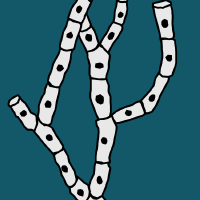Topic Menu
► Topic MenuTopic Editors




New Insights and Case Studies in Specific and Complex Plant Diseases
Topic Information
Dear Colleagues,
In recent years, both cultivated crops and ornamental and forest species are facing new or re-emerging diseases that cause damage or pose severe threats to the intensive plantations, the urban greenery and the natural ecosystems. This can be especially evident in perennial species in which a harmful action can impact and cumulate over the years in the form of both acute or chronic symptomatology. In some cases, the relationships between one single causal agent and the disease appear quite unambiguous as the pathogen unequivocally expresses a high virulence in the Kock postulate experiments. In other circumstances, the disease appears as the outcome of the concerted action of more biotic agents (i.e., viruses, bacteria, fungi) and of abiotic factors which trigger a climate change and modify the ecological niche of both the microbial community and the host plant. This multi-factorial interaction gives rise to disease states whose etiology can be puzzling to unravel. In this latter case, not only virulent microbes but also opportunistic/secondary colonizers and microorganisms able to perform both a pathogenic and an endophytic lifestyle are involved. The comprehension of specific and complex or polymicrobial plant diseases is facing a new era due to the high-resolution contribution of the new “omics” technologies that can provide insights into the many relationships between the microbes, the environment and the host plant. This Topics focuses on novel acquisitions, in terms of etiological investigations—namely predisposing, inciting and contributing factors—epidemiology, plant-microbe-environment interactions, detection and control, concerning plant diseases caused by a single agent or multiple biotic/abiotic stress factors. Reviews of the current knowledge of the diseases are also of interest.
Dr. Stefania Loreti
Dr. Massimo Pilotti
Dr. Marco Scortichini
Dr. Tatjana Popović Milovanović
Topic Editors
Keywords
- polymicrobial diseases
- viruses
- bacteria
- fungi
- oomycets
- disease epidemiology
- disease control
- detection
- predisposing factors
- climate change
Participating Journals
| Journal Name | Impact Factor | CiteScore | Launched Year | First Decision (median) | APC |
|---|---|---|---|---|---|

Agronomy
|
3.7 | 5.2 | 2011 | 15.8 Days | CHF 2600 |

Journal of Fungi
|
4.7 | 4.9 | 2015 | 18.4 Days | CHF 2600 |

Microorganisms
|
4.5 | 6.4 | 2013 | 15.1 Days | CHF 2700 |

Pathogens
|
3.7 | 5.1 | 2012 | 16.4 Days | CHF 2700 |

Plants
|
4.5 | 5.4 | 2012 | 15.3 Days | CHF 2700 |

MDPI Topics is cooperating with Preprints.org and has built a direct connection between MDPI journals and Preprints.org. Authors are encouraged to enjoy the benefits by posting a preprint at Preprints.org prior to publication:
- Immediately share your ideas ahead of publication and establish your research priority;
- Protect your idea from being stolen with this time-stamped preprint article;
- Enhance the exposure and impact of your research;
- Receive feedback from your peers in advance;
- Have it indexed in Web of Science (Preprint Citation Index), Google Scholar, Crossref, SHARE, PrePubMed, Scilit and Europe PMC.

